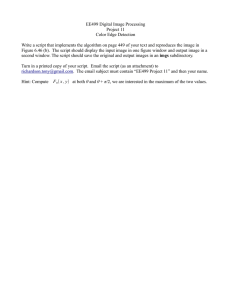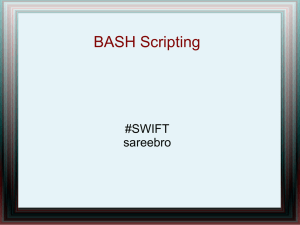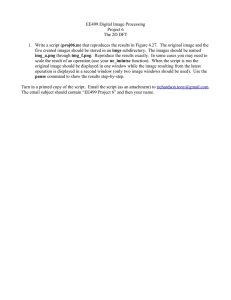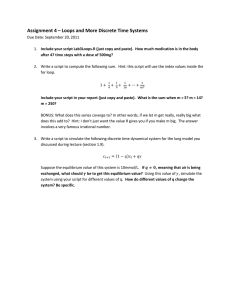Assignment 11.doc
advertisement
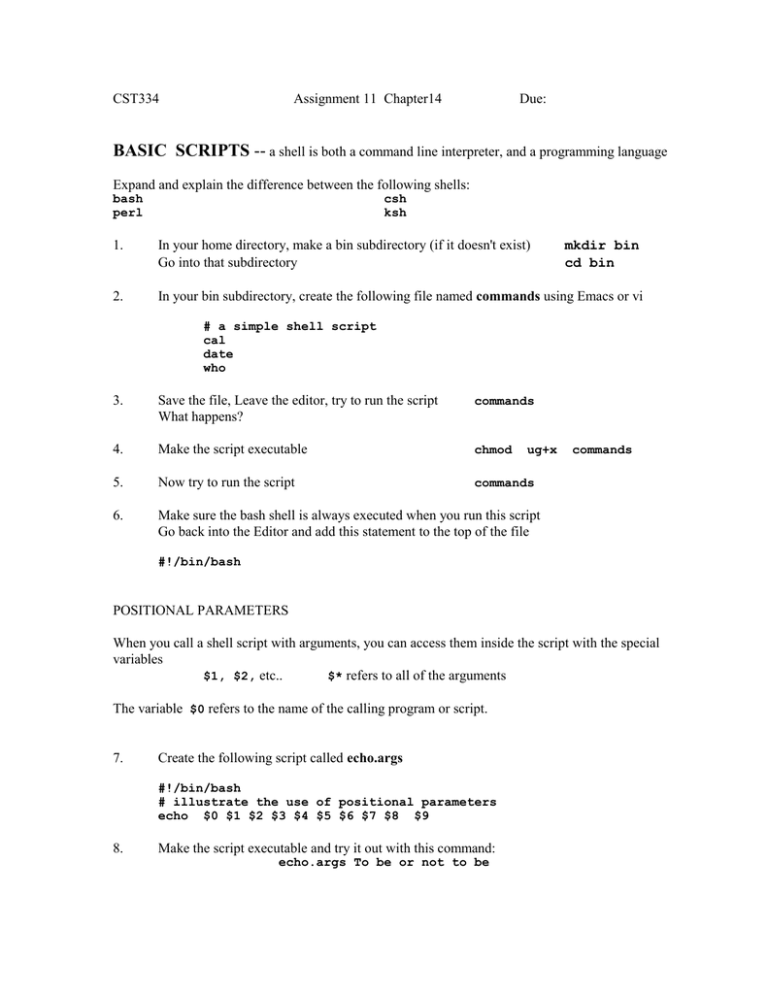
CST334 Assignment 11 Chapter14 Due: BASIC SCRIPTS -- a shell is both a command line interpreter, and a programming language Expand and explain the difference between the following shells: bash perl csh ksh mkdir bin cd bin 1. In your home directory, make a bin subdirectory (if it doesn't exist) Go into that subdirectory 2. In your bin subdirectory, create the following file named commands using Emacs or vi # a simple shell script cal date who 3. Save the file, Leave the editor, try to run the script What happens? commands 4. Make the script executable chmod 5. Now try to run the script commands 6. Make sure the bash shell is always executed when you run this script Go back into the Editor and add this statement to the top of the file ug+x commands #!/bin/bash POSITIONAL PARAMETERS When you call a shell script with arguments, you can access them inside the script with the special variables $1, $2, etc.. $* refers to all of the arguments The variable $0 refers to the name of the calling program or script. 7. Create the following script called echo.args #!/bin/bash # illustrate the use of positional parameters echo $0 $1 $2 $3 $4 $5 $6 $7 $8 $9 8. Make the script executable and try it out with this command: echo.args To be or not to be 9. Change the script so it looks like this: #!/bin/bash # illustrate the use of positional parameters, user defined # variables and the read command echo 'what is your name?' read name echo "well, $name, you typed $# arguments:" echo "$*" 10. Save the file, exit, try out the script echo.args To be or not to be THE SET COMMAND takes the output of a command and stores it in the positional parameters date 11. Try out the date command Number the different pieces of the output 1, 2, 3 etc. 12. Set the positional parameters to the output of date set $(date) 13. Look at the value of the positional parameters now: echo $1 $2 $3 $4 $5 $6 14. Make a new script file called setdate with the following lines: #!/bin/bash # demonstrate the set command in a script set $(date) echo "Time: $4 $5" echo "Day: $1" echo "Date: $3 $2 $6" 15. Save the file, make it executable, run the file APPLICATION: The wc ("word count") filter the counts the words, lines, and characters in a file. For example, try running wc on the setdate file you just made: $ wc setdate 6 23 124 setdate (Q: what positional parameter is the filename in the output?) The output tells us there are 6 lines, 23 words and 124 characters. To improve on wc, you are going to make a new script called mywc, which will provide a modified output labelling each portion so it is more readable. The output of your script mywc, used in the following command mywc setdate should read setdate count… lines: 6 words: 23 characters: 124 To do this create the script mywc using the following plan: 1) select the bash shell, 2) run wc on the $1 positional parameter and capture the output using set, 3) print the filename ($4) , 4) print the number of lines ($1), number of words ($2) and number of characters ($3) using appropriate labels. Use your script setdate as a model for this problem. Leave the scripts commands, echo.args, setdate, and mywc in your bin directory for grading on the due date.
